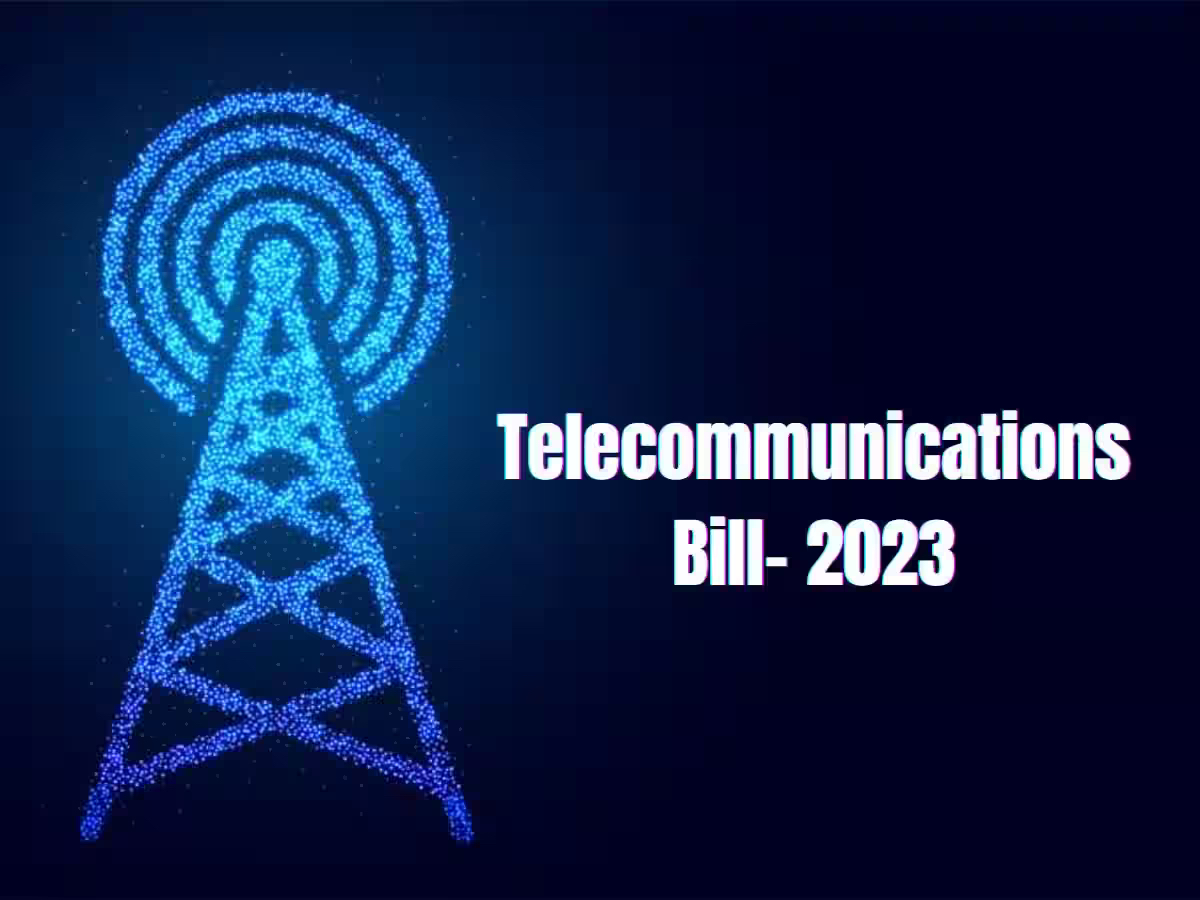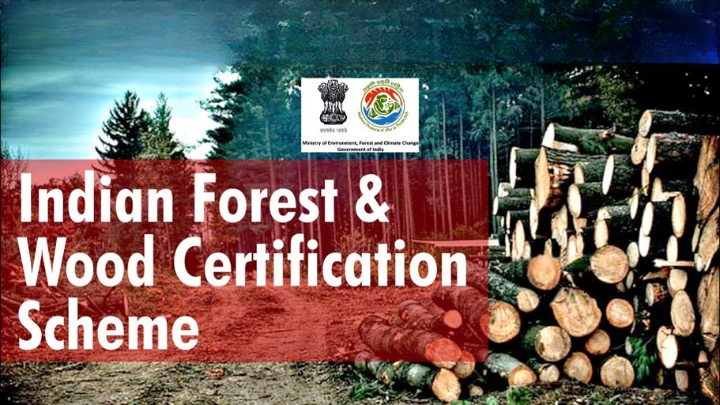'World's Largest Meditation Centre': PM Modi inaugurates Swarved Mahamandir in Varanasi (ET)

- 19 Dec 2023
Why is it in the News?
Prime Minister Narendra Modi inaugurated the world’s largest meditation centre, Swarved Mahamandir, in Varanasi on December 18.
About the Swarved Mahamandir:
- The Swarved Mahamandir stands as the world's largest meditation centre, accommodating 20,000 individuals in collective contemplation.
- Situated in Varanasi, Uttar Pradesh, this spiritual haven aspires to cast a luminous spiritual aura, enveloping the globe in a state of tranquil attentiveness.
- Named after the Swarved, a profound spiritual text penned by Sadguru Shri Sadafal Deoji Maharaj, the visionary behind Vihangam Yoga and an enduring yogi, the temple serves as a bastion for disseminating Swarveda teachings.
- Emphasizing Brahma Vidya, a profound body of knowledge, it guides spiritual seekers toward sustaining an unwavering equilibrium of peace and happiness.
- Architecturally, the Mahamandir is an imposing seven-floor superstructure, adorned with a captivating design featuring 125-petal lotus domes.
- Crafted from teakwood, the intricate carvings embellishing the ceiling and doors add to its allure.
- Pink sandstone envelops the temple walls, complemented by an enchanting garden featuring medicinal herbs.
- Imprinted on the Mahamandir's walls are verses from the Swarveda, serving as an enduring testament to the spiritual wisdom that resonates within its sacred confines.
What is Vihangam Yoga?
- Vihangam Yoga, an indigenous form of Yoga and meditation, was established by Sadguru Sadafal Deo Ji Maharaj in 1924.
- The nomenclature of this practice is derived from two foundational words: "Vihag," signifying bird, and "Yog," denoting union.
- The name encapsulates the profound concept of a bird ascending from the terrestrial realm, soaring high and unbounded in the sky.
- This symbolism mirrors the ultimate aim of Vihangam Yoga – the liberation of the soul from attachments to the material world, allowing it to recognize and embrace its innate, unshackled essence.
- Only through this liberation can an individual's consciousness seamlessly merge with the universal consciousness, often referred to as the Supreme Being, leading to a state of enduring tranquillity and bliss.
Telecommunications Bill, 2023: The changes it seeks in the telecom sector, why some have raised concerns (Indian Express)

- 19 Dec 2023
Why is it in the News?
The Telecommunications Bill, 2023, was introduced in the Lok Sabha on Monday. The bill allows the government to take over, manage or suspend telecommunication services or a network over national security.
Key Features of the Telecommunications Bill, 2023
- Repeal of Existing Laws: The bill annuls the Indian Telegraph Act, 1885, the Indian Wireless Telegraphy Act, 1933, and the Telegraph Wires (Unlawful Possession) Act, 1950, while introducing amendments to the Telecom Regulatory Authority of India (TRAI) Act, 1997.
- Authorization for Telecom Activities: Central government approval is mandatory for telecommunication services, network establishment, operation, maintenance, expansion, or possession of radio equipment.
- Existing licenses remain valid for their granted period or five years if unspecified.
- Spectrum Assignment: Spectrum allocation, except for specific purposes, will be through auction.
- Exceptions include national security, disaster management, and services by state-owned entities.
- Interception and Search Powers: Messages may be intercepted, monitored, or blocked for public safety, emergencies, or specified grounds like state security and prevention of offences.
- Government's Extraordinary Powers: The government can take temporary possession of telecom infrastructure during public emergencies, with the authority to suspend telecom services.
- Authorized officers may search for unauthorized equipment.
- Standards Specification Authority: The central government can prescribe standards for telecom equipment, infrastructure, networks, and services.
- Right of Way for Telecom Infrastructure: Facility providers can seek a right of way over public or private property for telecom infrastructure on a non-discriminatory basis.
- User Protection Measures: The government may implement measures to protect users, including consent for specific messages, creation of Do Not Disturb registers, and a mechanism for reporting malware.
- TRAI Appointments and Experience Requirements: Amendments allow individuals with at least 30 years of professional experience to serve as TRAI chairperson and those with at least 25 years of membership.
- Digital Bharat Nidhi: The Universal Service Obligation Fund (USOF) is renamed Digital Bharat Nidhi, allowing its use for research and development (R&D).
- Adjudication Process: An adjudicating officer, of the rank of joint secretary and above, will handle inquiries and orders against civil offences.
- Appeals can be made to the Designated Appeals Committee and further to TDSAT.
- Offences and Penalties: The Bill outlines criminal and civil offences, imposing penalties and imprisonment for unauthorized telecom services, network access, and equipment possession.
- Civil penalties apply for breaches of authorization terms.
What are the Reasons behind the introduction of the Telecommunications Bill, of 2023?
- The telecommunications sector plays a pivotal role in fostering economic and social progress, serving as the conduit for digital services.
- Given its significance, the security of our nation relies substantially on the robustness of telecommunication networks.
- Hence, there is an imperative to establish a legal and regulatory structure that prioritizes the security and resilience of telecommunication networks, fostering a digitally inclusive trajectory for growth.
- The dynamic evolution of telecommunication, its patterns of use, and underlying technologies in recent years underscores the necessity for legislation that aligns with the evolving needs of our society.
Mines Ministry to Launch National Geoscience Data Repository Portal To Foster Innovation in Exploration (PIB)

- 19 Dec 2023
Why is it in the News?
Ministry of Mines is to launch the National Geoscience Data Repository (NGDR) Portal on 19th December 2023 in a ceremony in New Delhi.
What is the National Geoscience Data Repository Portal?
- This extensive online platform facilitates the retrieval, exchange, and examination of geospatial information nationwide.
- Spearheaded by the Geological Survey of India (GSI) and the Bhaskaracharya Institute of Space Applications and Geoinformatics (BISAG-N), the NGDR initiative marks a notable advancement in democratizing crucial geoscience data.
- It empowers stakeholders in various industries and academia by providing unparalleled access to invaluable resources.
About the Geological Survey of India (GSI):
- The Geological Survey of India (GSI) originated in 1851 with the primary objective of identifying coal deposits for the Railways.
- Since its inception, GSI has transformed into a repository of geo-scientific information, achieving international recognition for its contributions.
- The organization is dedicated to creating and updating national geoscientific data, conducting mineral resource assessments, and providing impartial geological expertise crucial for policy decisions, commercial ventures, and socio-economic needs.
- GSI focuses on comprehensive documentation of geological processes, employing state-of-the-art techniques in geological, geophysical, and geochemical surveys.
- As an attached office of the Ministry of Mines, GSI operates from its headquarters in Kolkata, with six regional offices in Lucknow, Jaipur, Nagpur, Hyderabad, Shillong, and Kolkata, along with state unit offices across India.
About BISAG (N):
- Bhaskaracharya National Institute for Space Applications and Geo-informatics (BISAG-N) operates as an Autonomous Scientific Society registered under the Societies Registration Act, 1860, falling under the MeitY, Government of India.
- Its multifaceted mission encompasses technology development and management, research and development, fostering national and international collaboration, capacity building, and facilitating technology transfer and entrepreneurship development in the realm of geospatial technology.
- BISAG-N has played a pivotal role in implementing GIS and geospatial technologies for major ministries and nearly all states, integrating diverse technological domains such as geo-spatial science, information science systems, and mathematics science systems.
- The institute operates as a state agency under the Department of Science and Technology, Government of Gujarat, situated in Gandhinagar, Gujarat.
mRNA, easy to customise, is the next frontier for personalised medicine (The Hindu)

- 19 Dec 2023
Why is it in the News?
The therapeutic use of messenger RNA (mRNA) has fueled great hope to combat a wide range of incurable diseases.
What is mRNA?
- mRNA, or messenger RNA, represents a type of nucleic acid responsible for conveying genetic instructions.
- Within cells, mRNA serves as a messenger, transporting codes from the DNA located in the nucleus to the sites of protein synthesis in the cytoplasm, where ribosomes are situated.
- The genetic information in DNA undergoes transcription, or copying, into mRNA before proteins can be synthesized.
- Each mRNA molecule encodes information for a specific protein, with every sequence of three nitrogen-containing bases dictating the inclusion of a particular amino acid in the protein.
Advantages of mRNA-Based Medicine:
- Scalability: The production of mRNA in the laboratory is highly scalable, as the method for generating mRNA remains consistent across different types.
- This contrasts with traditional drugs, where each compound has distinct chemistry, requiring varied manufacturing methods.
- Patient-Centric: mRNA, being naturally degradable by cells when no longer needed, allows for flexible dosage adjustments to cater to changing patient requirements.
- Broad Therapeutic Potential: mRNA-based medicine holds promise for addressing a wide range of diseases rooted in cellular errors, such as the production of incorrect proteins, mutant protein versions, or insufficient normal protein levels.
- By delivering corrected mRNA to affected cells, scientists aim to facilitate the production of the correct proteins.
Prospects of mRNA-Based Medicine:
- Diverse Treatment Applications: The future of mRNA-based medicine extends to addressing conditions like heart disease, neurodegenerative diseases, and bone loss, among others.
- Enhanced Wound Healing: mRNA drugs exhibit the potential to stimulate the formation of new blood vessels.
- This capability is particularly beneficial for diabetic patients with compromised blood circulation, reducing the risk of amputation.
- Treatment for Rare Conditions: mRNA-based medicine holds promise in treating rare disorders like propionic acidaemia, characterized by insufficient levels of liver proteins crucial for preventing the accumulation of toxic by-products in the body, especially in children.
Way Forward
- The capacity to tailor and manufacture mRNA easily enhances its prospects as a potent and personalized therapy, offering the potential for reduced side effects and widespread applicability.
- Despite these advancements, mRNA-based therapeutics are in the early stages of development, facing challenges such as the short lifespan of mRNA in cells and limited protein production duration.
- Addressing these hurdles is crucial to optimizing mRNA effectiveness and minimizing the quantity of mRNA needed.
MoEFCC has launched the Indian Forest & Wood Certification Scheme to promote sustainable forest management and agroforestry practices across the country (Indian Express)

- 19 Dec 2023
Why is it in the News?
Amid rising international concerns about deforestation and illicit trade in timber, the government has launched its own “national” forest certification scheme to validate entities that adhere to sustainable practices in the management of forests and their products.
About the Indian Forest & Wood Certification Scheme (IFWCS):
- The Indian Forest & Wood Certification Scheme (IFWCS) serves as the national forest certification initiative, focusing on fostering sustainable forest management and the sustainable utilization of Trees outside Forests (TOF) across India.
- Voluntary Participation: The scheme provides a voluntary third-party certification mechanism to encourage agroforestry practices within the country.
- Alternatives to Foreign Certifications: IFWCS presents an indigenous alternative to foreign certification agencies that have been prevalent in the Indian market for the past two decades.
- Applicability: The certification applies nationwide, covering both forest areas and TOF plantations on government, private, agroforestry, and other lands.
- It encompasses both timber and non-timber forest produce (NTFP).
- Necessity: With major export markets like Europe and the United States imposing stricter rules on forest product imports due to deforestation concerns related to climate change, IFWCS can provide market incentives for entities practising responsible forest management.
- Significance: The scheme aims to enhance trust, transparency, and international acceptability of Indian forest-based products.
- It is especially beneficial for state forest departments, individual farmers, or Farmer Producer Organizations engaged in agroforestry.
- Compliance and Legal Status: While the certification may gain recognition from various regulatory authorities, it does not serve as legal advice on compliance with specific laws, regulations, or requirements.
- Foundation: Forest Management certification relies on the Indian Forest Management Standard, a crucial component of the National Working Plan Code 2023, introduced this year.
- The Indian Forest and Wood Certification Council, acting as a multi-stakeholder advisory body, will supervise the scheme.
- The council comprises members from esteemed institutions like the Indian Council of Forestry Research and Education, Forest Survey of India, and the Indian Institute of Forest Management, along with representatives from relevant ministries.
- Implementation: The Indian Institute of Forest Management in Bhopal will serve as the scheme's operating agency.
- Certification bodies conducting independent audits will be accredited by the National Accreditation Board for Certification Bodies under the Quality Council of India.
Management of Forests in India:
- The administration of forests in India aligns with individual working plans specific to each forest area.
- Recently, these plans have undergone revisions incorporating the newly formulated Indian Forest Management Standards.
- Comprising 8 criteria, 69 indicators, and 254 verifiers, these standards are obligatory for implementation across all forest divisions nationwide.
- While forest divisions are not compelled to obtain certification, adhering to these standards renders them eligible.
- The decision to pursue certification is contingent upon specific requirements and considerations.
